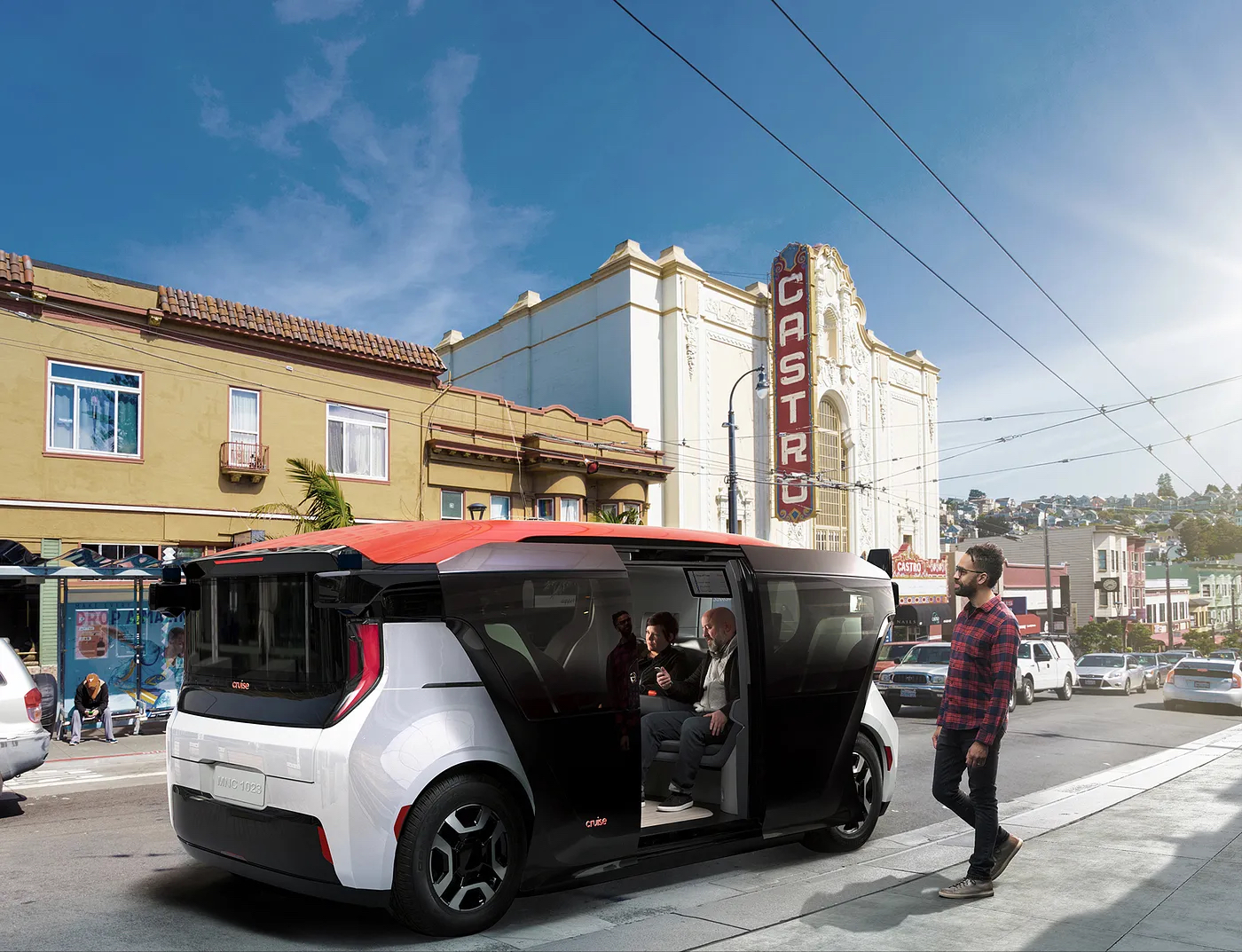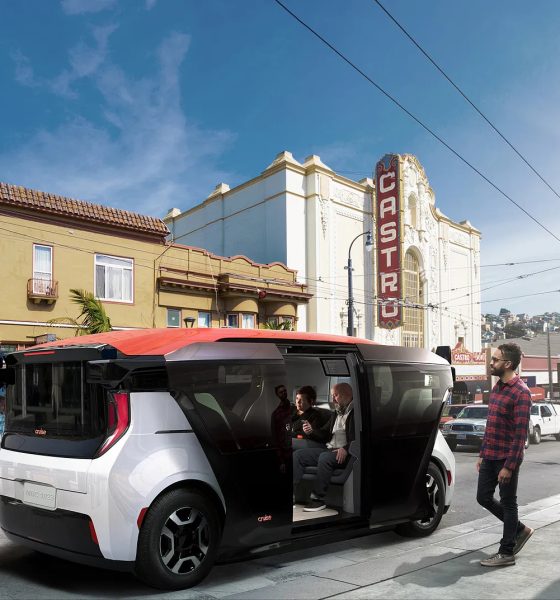General Motors (GM) is set to pause production of the Cruise Origin self-driving van following multiple incidents with the subsidiary’s driverless taxis in San Francisco.
After a self-driving Cruise taxi dragged and pinned a woman in the California city last month, the state’s Department of Motor Vehicles (DMV) immediately suspended the company’s license to operate driverless vehicles. This and other incidents with Cruise’s robotaxis have sparked new investigations and caused the company to re-evaluate its self-driving approach, including plans to cease production on the upcoming driverless van.
Cruise CEO Kyle Vogt tried to address concerns about the safety of the company’s autonomous vehicles during a company-wide meeting on Monday, from which Forbes obtained audio. During the address, Vogt said that GM will be pausing production of the Origin van, which was expected to ramp up in the coming months.
Vogt told workers, “because a lot of this is in flux, we did make the decision with GM to pause production of the Origin.”
The company was planning to build the Origin van without a steering wheel or pedals, expected to be completely autonomous. Cruise was scheduled to debut the driverless vehicle this year, with some units already having been produced. Vogt also said last year the vehicle would be able to act as a delivery courier when not in use as a robotaxi.
During the meeting, Vogt said that GM had produced hundreds of the Origin van thus far, which he added would be “more than enough for the near-term when we are ready to ramp things back up.”
Vogt also said Cruise is actively cooperating with its regulators and partners during this time, and reports last week showed that the company has hired a third-party legal firm and a technology consultant to aid its internal reviews.
“During this pause we’re going to use our time wisely,” Vogt said.
Just last month, GM CEO Mary Barra said Cruise hoped to have the vehicle on the road in Tokyo as soon as 2026.
“As Cruise continues to push the boundaries of what AV technology can deliver society, safety is always at the forefront,” Barra said during GM’s Q3 earnings call. “And this is something they are continuously improving.”
DMV officials noted that Cruise had “omitted” and “misrepresented” certain details about the October 2 accident with a pedestrian, and Vogt went on to highlight the company’s need to regain the public’s trust during the pause. In addition to facing local scrutiny, Cruise has also garnered additional investigations from federal regulators.
“And so if we want to rebuild trust with these groups, we have got to make sure that we are having those discussions and they hear things from us first and not from the press,” Vogt added during the Monday meeting. “So, candidly because we’ve had some leaks about information coming out of this meeting we have got to be careful what we share from this meeting, or these efforts to rebuild trust could backfire.”
The news of GM’s production pause on the Origin van was later confirmed by GM spokesperson Chaiti Sen, who told Forbes that the automaker would be “finishing production on a small number of pre-commercial vehicles,” before “temporarily” ending production.
“More broadly speaking, we believe autonomous vehicles will transform the way people move around the world, and the Origin is an important part of the AV journey – it’s the first scalable vehicle ever designed specifically for autonomous rides and will make transportation more accessible,” she added in the email.
Cruise is essentially a competitor to Tesla’s Full Self-Driving (FSD), which is currently available to users in a beta version. Tesla’s FSD beta, while offering brief periods of hands-free driving on highways, is still meant to be monitored during use at all times, and drivers are expected to be ready to regain control of the car at any point. Additionally, Tesla’s FSD beta system also faces scrutiny from regulators.
Tesla delivering cars with FSD installed, no update required
What are your thoughts? Let me know at zach@teslarati.com, find me on X at @zacharyvisconti, or send your tips to us at tips@teslarati.com.

News
Nvidia CEO Jensen Huang explains difference between Tesla FSD and Alpamayo
“Tesla’s FSD stack is completely world-class,” the Nvidia CEO said.

NVIDIA CEO Jensen Huang has offered high praise for Tesla’s Full Self-Driving (FSD) system during a Q&A at CES 2026, calling it “world-class” and “state-of-the-art” in design, training, and performance.
More importantly, he also shared some insights about the key differences between FSD and Nvidia’s recently announced Alpamayo system.
Jensen Huang’s praise for Tesla FSD
Nvidia made headlines at CES following its announcement of Alpamayo, which uses artificial intelligence to accelerate the development of autonomous driving solutions. Due to its focus on AI, many started speculating that Alpamayo would be a direct rival to FSD. This was somewhat addressed by Elon Musk, who predicted that “they will find that it’s easy to get to 99% and then super hard to solve the long tail of the distribution.”
During his Q&A, Nvidia CEO Jensen Huang was asked about the difference between FSD and Alpamayo. His response was extensive:
“Tesla’s FSD stack is completely world-class. They’ve been working on it for quite some time. It’s world-class not only in the number of miles it’s accumulated, but in the way it’s designed, the way they do training, data collection, curation, synthetic data generation, and all of their simulation technologies.
“Of course, the latest generation is end-to-end Full Self-Driving—meaning it’s one large model trained end to end. And so… Elon’s AD system is, in every way, 100% state-of-the-art. I’m really quite impressed by the technology. I have it, and I drive it in our house, and it works incredibly well,” the Nvidia CEO said.
Nvidia’s platform approach vs Tesla’s integration
Huang also stated that Nvidia’s Alpamayo system was built around a fundamentally different philosophy from Tesla’s. Rather than developing self-driving cars itself, Nvidia supplies the full autonomous technology stack for other companies to use.
“Nvidia doesn’t build self-driving cars. We build the full stack so others can,” Huang said, explaining that Nvidia provides separate systems for training, simulation, and in-vehicle computing, all supported by shared software.
He added that customers can adopt as much or as little of the platform as they need, noting that Nvidia works across the industry, including with Tesla on training systems and companies like Waymo, XPeng, and Nuro on vehicle computing.
“So our system is really quite pervasive because we’re a technology platform provider. That’s the primary difference. There’s no question in our mind that, of the billion cars on the road today, in another 10 years’ time, hundreds of millions of them will have great autonomous capability. This is likely one of the largest, fastest-growing technology industries over the next decade.”
He also emphasized Nvidia’s open approach, saying the company open-sources its models and helps partners train their own systems. “We’re not a self-driving car company. We’re enabling the autonomous industry,” Huang said.
Elon Musk
Elon Musk confirms xAI’s purchase of five 380 MW natural gas turbines
The deal, which was confirmed by Musk on X, highlights xAI’s effort to aggressively scale its operations.

xAI, Elon Musk’s artificial intelligence startup, has purchased five additional 380 MW natural gas turbines from South Korea’s Doosan Enerbility to power its growing supercomputer clusters.
The deal, which was confirmed by Musk on X, highlights xAI’s effort to aggressively scale its operations.
xAI’s turbine deal details
News of xAI’s new turbines was shared on social media platform X, with user @SemiAnalysis_ stating that the turbines were produced by South Korea’s Doosan Enerbility. As noted in an Asian Business Daily report, Doosan Enerbility announced last October that it signed a contract to supply two 380 MW gas turbines for a major U.S. tech company. Doosan later noted in December that it secured an order for three more 380 MW gas turbines.
As per the X user, the gas turbines would power an additional 600,000+ GB200 NVL72 equivalent size cluster. This should make xAI’s facilities among the largest in the world. In a reply, Elon Musk confirmed that xAI did purchase the turbines. “True,” Musk wrote in a post on X.
xAI’s ambitions
Recent reports have indicated that xAI closed an upsized $20 billion Series E funding round, exceeding the initial $15 billion target to fuel rapid infrastructure scaling and AI product development. The funding, as per the AI startup, “will accelerate our world-leading infrastructure buildout, enable the rapid development and deployment of transformative AI products.”
The company also teased the rollout of its upcoming frontier AI model. “Looking ahead, Grok 5 is currently in training, and we are focused on launching innovative new consumer and enterprise products that harness the power of Grok, Colossus, and 𝕏 to transform how we live, work, and play,” xAI wrote in a post on its website.
Elon Musk
Elon Musk’s xAI closes upsized $20B Series E funding round
xAI announced the investment round in a post on its official website.

xAI has closed an upsized $20 billion Series E funding round, exceeding the initial $15 billion target to fuel rapid infrastructure scaling and AI product development.
xAI announced the investment round in a post on its official website.
A $20 billion Series E round
As noted by the artificial intelligence startup in its post, the Series E funding round attracted a diverse group of investors, including Valor Equity Partners, Stepstone Group, Fidelity Management & Research Company, Qatar Investment Authority, MGX, and Baron Capital Group, among others.
Strategic partners NVIDIA and Cisco Investments also continued support for building the world’s largest GPU clusters.
As xAI stated, “This financing will accelerate our world-leading infrastructure buildout, enable the rapid development and deployment of transformative AI products reaching billions of users, and fuel groundbreaking research advancing xAI’s core mission: Understanding the Universe.”
xAI’s core mission
Th Series E funding builds on xAI’s previous rounds, powering Grok advancements and massive compute expansions like the Memphis supercluster. The upsized demand reflects growing recognition of xAI’s potential in frontier AI.
xAI also highlighted several of its breakthroughs in 2025, from the buildout of Colossus I and II, which ended with over 1 million H100 GPU equivalents, and the rollout of the Grok 4 Series, Grok Voice, and Grok Imagine, among others. The company also confirmed that work is already underway to train the flagship large language model’s next iteration, Grok 5.
“Looking ahead, Grok 5 is currently in training, and we are focused on launching innovative new consumer and enterprise products that harness the power of Grok, Colossus, and 𝕏 to transform how we live, work, and play,” xAI wrote.










